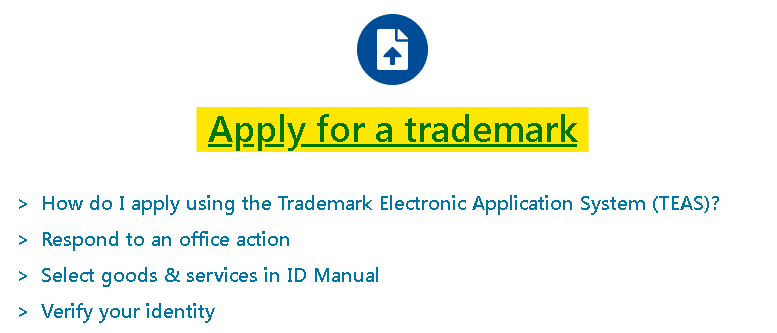When you form a limited liability company (LLC), your business name is protected from reuse in your state. If you plan to expand your business, this can get problematic.
The solution is to nationally trademark your name and protect your business across the country. Also, it’s a good idea to trademark your business name as quickly as possible after LLC formation; the longer you wait, the greater the risk of somebody else registering the same name.
Moreover, changing your business’s name can be tedious, and you could lose loyal customers. Luckily, the trademark application process is relatively straightforward, and this guide explains how to get it done.
1. Choose and Confirm Your Business’s Name
First, you need to find and firmly commit to your LLC name! Even though you might be antsy to start the trademarking process, it’s important not to rush this step because your name will be presented to the public.
Follow these steps to make sure your preferred name is available.
- Perform a business name search in your state to ensure another business hasn’t already taken the name. It’s important not to skip this step because if you register a name already registered, your application will be rejected, and you’ll need to start again.
- Make sure the name is not already trademarked. Check with the US Patent and Trademark Office (USPTO) to ensure the name is available nationally.
- Do a thorough domain name search on a site like GoDaddy to ensure your website’s preferred business name is available. Using “.com” or “.org” sharply increases credibility, so it’s best to focus on these. A domain name search will also tell you if another business uses your name in a different state.
- Do a Google search to confirm that no company outside the US is using your preferred business name. Choose a different name if you discover a large, established foreign company with the same name.
2. Determine Your Trademark’s Format and Appearance
There are a couple of different trademark formats, but the most common is the standard character format. You may have heard this referred to as a word mark since this form of a trademark consists only of words, letters, and numbers– or a combination of these.
The trademark does not include design elements, such as text formatting, size, font, and color. Standard character format trademarks only claim and protect the specific phrase.
Your other option is the special form format. You may have heard trademarks of this format referred to as design marks or logo trademarks. Unlike the standard character format, a special form trademark is much more detailed with distinct design and style elements.
For instance, design marks often include and specify the following:
- Design and layout of business name
- Font type, size, and color
- Logo image and coloring
- Slogan, motto, or tagline
This trademark format allows for much greater specificity and ensures your company controls the name as well as the visual design of the brand. These extra design details also make distinguishing your trademark from other pre-existing ones easier.
But remember that if you apply for a trademark in the special form format, the trademark will only claim and protect that specific depiction of the name. In other words, only how the trademark looks are protected.
It will not protect your business from a company with a similar name and a different mark. This means that another entity can submit a trademark application for a company with a name similar to yours but with a design mark different from yours.
Key Trademark Characteristics
Before you get ahead of yourself, it’s essential to carefully think about the following elements of your LLC’s name and trademark format:
- The specific and exact wording
- Font type and size
- Text format
- Logo or design mark
- The layout of both the text and image
Another attribute to remember is that the name should indicate your business’s top value offering.
The most important thing to remember is that your trademark needs to be distinctive from all other existing trademarks.
Thus, it’s essential to avoid vague or generic language or language that’s primarily descriptive, suggestive, or arbitrary.
For example, a trademark for “Blue-Colored Rugs” would likely be rejected because it’s vague and refers to a common real-world item. On the other hand, a trademark for “Blue’s Rugs” or “Bluegrass Rugs” is much more likely to succeed, as it’s much more specific.
3. Search for Comparable Trademarks
Before you start your application, it’s wise to dedicate some time to thoroughly searching the USPTO’s Trademark Electronic Search System, or TESS, for similar names or marks.
If your chosen name is too closely related to another, your trademark will likely be refused. However, a preliminary search will allow you to alter yours accordingly, minimizing the risk of issues.
For instance, a business applying for the trademark “Sam’s Coffee Shack” would not be denied just because the trademark “Sam’s Coffee Shop” already exists.
Yet even though “Sam’s Coffee Shack” differs from “Sam’s Coffee Shop,” they’re also highly similar, which could confuse customers, undermine your business, and even spark a lawsuit.
4. Access a Trademark Application on the USPTO Website
When you’ve completed your research and feel confident in your name and design, visit the USPTO site and click on the link to apply for your trademark online.
You’ll be directed to a page with additional information and support for the trademark application process using the Trademark Electronic Application System, known as TEAS.
5. Fill Out Your Trademark Application
You should be able to complete this application relatively quickly, but you must fill it out with care and focus. Remember that the process from application submission to trademark approval can take several months, so it’s not wise to rush.
What information do I need for my trademark application?
You’ll be asked to provide a considerable amount of information on your trademark application. The below list is not exhaustive, and other factors may come into play on your application. So carefully review the requirements and requested information before submitting your application.
- Name and contact information of the LLC applying for the trademark.
- Personal details and contact information of the LLC’s owner.
- NOTE: If you live or work outside of the United States, you will need a trademark attorney to complete the application on your behalf.
- List of the products and services the LLC intends to sell.
- Include detailed descriptions of each product and service.
- Describe the classification of each product and service within your trademark. The trademark can be registered in more than one class, which requires an additional fee.
- The specific business name to be trademarked.
If you experience difficulties completing your trademark application or are unsure if your application needs any necessary information, we recommend contacting a copyright attorney.
6. File Your Trademark Application With the USPTO
You can file your application online via TEAS or the low-cost TEAS Plus system. To qualify for TEAS Plus, as the website details, you must use a Trademark ID manual standard description for the product or service you’re applying to trademark.
Alternatively, applicants who take it upon themselves to write their trademark description must use the standard TEAS filing option.
You’ve Submitted Your Trademark Application. Now What?
After you’ve submitted your trademark application, you might want to relax. Trademark applications often take months to process and sometimes upwards of 18 months.
The submission of your trademark application will trigger two events. First, you’ll be sent a receipt with an identifying serial number you can use to reference your trademark application. We suggest printing out a copy for your records.
Second, the application will be reviewed by a USPTO patent lawyer, who will make their recommendation. Finally, if your trademark application is approved, your trademark will be published in a web-based journal within three months of approval.
This journal is publicly accessible and contains all trademarked names to help reduce the chance of highly similar trademarks and duplicate applications.
Your Trademark May Not Get Approved
Your application may be rejected on your first attempt. Don’t worry – this is not unusual.
The patent lawyer will likely send you an “office action” letter indicating the issues with your application. After that, you’ll probably have six months to resolve these issues and re-apply. If you fail to re-apply within the allotted time, the application will expire and be officially rejected.
But you could still apply for a new trademark with lessons learned.
Your Trademark May Receive Opposition
Even if your trademark application is approved, the risk remains that a third party may oppose it for one reason or another. For example, your business name or logo is similar to theirs. Whatever the reason, you’ll probably want to hire a trademark attorney to guide your legal response.






